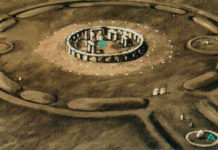Scientists confirm that a twisted skeleton found under a car park belongs to the legendary royal and DNA tests prove bones belong to Richard III. The skeleton, believed to be that of the medieval monarch, was found in Leicester city centre. Since announcing the discovery of Richard III’s remains under a car park, researchers have been inundated with emails from people claiming to be related to England’s most vilified king. Amidst the radiocarbon dating, forensic analysis, and osteological (bone) studies, it is the genetic techniques used to test the skeleton’s relatedness to modern day descendants of Richard III that have garnered the most interest.
Turi King, a geneticist at the University of Leicester, explains that to test the skeleton’s identity she extracted DNA from the remains, sequenced it and compared the sequences she obtained with those of two living relatives of the historical monarch.
A key obstacle to the testing of old genetic samples is that DNA becomes damaged over time. To get around this problem, King did not look at the nuclear DNA from the skeleton’s chromosomes, and instead focused on the DNA contained within mitochondria, the sub-cellular compartments that work like engines to provide each cell’s energy. “After death, our DNA degrades,” explains King. “As we just have one copy of our nuclear DNA in each of our cells, but many hundreds to thousands of copies of mitochondrial DNA, then mitochondrial DNA is the easiest DNA to retrieve from ancient remains.” Once she had managed to extract DNA from the skeleton, King used a combination of conventional sequencing techniques and newer, ‘next generation’ methods to read the mitochondrial DNA’s genetic code. King then compared these sequences with those taken from Richard III’s two living descendants, and found a match between all three sets of genetic code, also known as haplotypes.
The researchers say that the code sequence shared by the skeleton and the two descendants is rare enough to suggest that they are indeed related, although this is based on the assumption that different mitochondrial haplotypes were roughly as common in the general population at the time of Richard III as they are today. “It is a relatively rare type,” says King. “This strengthened the DNA case further but, as I’ve always stressed, DNA has to be taken alongside archaeological and osteological (bone) evidence. Like a forensic case, you wouldn’t just take the DNA evidence on its own.”
For now, however, we have to take the researchers’ word for it, as the team are some months away from publishing the details of the specific DNA sequences they examined, and the methods they used to compare them. “I’m able to give the punchline,” says King, “but the details of how I got there will have to wait for the academic publication.”
-end-




































